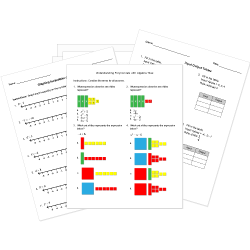This question is a part of a group with common instructions.
View group »
After some more algebra, and then moving all terms with x or y to the left side of the equation (and all others to the right), the resulting equation is:
| a2x2-c2x2+a2y2 | = | a4-a2c2 |
| (a2-c2)x2+a2y2 | = | (a2-c2)a2 |
| b2x2+a2y2 | = | a2b2 |
| x2a2+y2b2 | = | 1 |
This is the formula for the equation of an ellipse centered at
(0,0). Why can the substitution
b2=a2-c2 be made?
-
Since b is undefined so far, it can be defined as any value. Then, using the Pythagorean theorem, a2+b2=c2, simply rearrange to solve for b2.
-
Knowing that the semi-minor axis is b units long, one can substitute the square of this value for a2-c2.
-
Since b is not yet defined, it can be used to simplify the equation by defining b2=a2-c2. A positive value for a2-c2 exists since |a|>|c|.
-
Projecting b, the length of the semi-minor axis, onto the semi-major axis it is seen that b=a-c. Then, simply square both sides of the equation.






